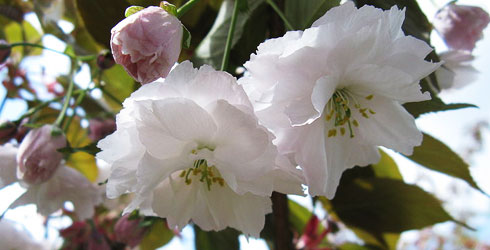History
Prunus serrulata is a variable species that also forms natural hybrids with close relatives such as P. sargentii (Sargent’s cherry) and P. speciosa (Oshima cherry). This, combined with an appreciation of its beauty, led to the cultivation and intensive selection of hundreds of different forms in both Japan and Korea.
They can be traced back to as early as the fifteenth century. The result is a vast assemblage of complex hybrids and cultivars. In Japan these derivatives are given the collective name of Sato-zakura, or garden cherries.
Sato-zakura are very variable in shape, in the colour of the young foliage and, especially, in the flowers. These may be single, double or so-called ‘chrysanthemum’ forms which have numerous petals. The flowers are produced in great quantities. The trees are highly valued as ornamentals and the flowering period draws crowds of people to cities such as Tokyo.
Sato-zakura are increasingly described and sold under their original Japanese names e.g. Ama-no-gawa, rather than later scientific or English names, reflecting the ancient origin of many of the forms.
